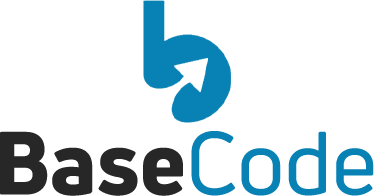Building and maintaining relationships with customers was challenging in the past, but now businesses have the advantage of accessible Customer Relationship Management (CRM) software and the ability to create CRM workflows.
CRM workflows serve as a game-changer by simplifying and automating various tasks related to customer support, account management, sales, and marketing. This automation empowers employees to focus on more strategic tasks, enhancing overall productivity.
This article delves deep into the concept of CRM workflows and the benefits of integrating a CRM workflow management tool. We also highlighted the steps to follow when creating a CRM workflow automation. If you need a CRM expert for your CRM workflow automation, you can book a free discovery call now. If not, read on!
What Is a CRM Workflow?
A CRM workflow is like a step-by-step plan that happens in a Customer Relationship Management (CRM) system. It’s a way to do specific tasks automatically based on certain conditions, all aiming to reach a specific goal.
The cool thing about a CRM workflow is that it gives you a big-picture view of the whole process, making it easy to keep track of how things are going. Basically, it makes sure that every necessary step to finish a deal is laid out clearly, helping you handle your tasks in a smart way.
Before, people used to draw these workflows as pictures, but now most of them are part of CRM software. This makes it easier to organize business tasks and makes everything run smoother and faster.
So, at its core, a CRM workflow is a set of actions that happen automatically in a CRM system when certain things occur. These conditions are usually set up using custom “if-this-then-that” (IFTTT) sequences. These sequences make things happen on their own when customers do specific things, like filling out a form, opening an email, or not doing anything for a certain time. This way, the whole customer relationship process becomes easy and efficient.
What is CRM Workflow Automation?
Now, let’s talk about putting CRM workflows into action by automating them. With CRM workflow automation, you can make certain tasks happen automatically, following set rules. This is really helpful because it makes things more efficient and productive, cutting down on the manual work needed.
A great example is in sales. There are lots of steps involved, like finding potential customers, creating profiles, understanding what customers want, and even dealing with complaints. CRM workflow automation helps in handling these tasks smoothly without needing too much human effort. It’s like making things run on their own to get the job done faster and better.
When you use CRM workflow automation for sales, it makes the process more organized. Instead of it being chaotic, it becomes like a step-by-step plan that is triggered by a unique event. Here’s an example of how it works:
- A potential customer reaches out by filling out a form.
- Your CRM software automatically sends a message to this person.
- If there’s no response, the CRM software follows up with another message.
- If there’s a reply, the CRM software evaluates the lead and informs the right team about the potential customer.
This system helps streamline the sales process, making it more organized and efficient.
When to use workflow automation
Deciding when to use workflow automation is essential. You might be thinking, “Sounds good! Should I use it all the time?” Well, the answer depends on your specific processes because not all tasks are the same. It’s crucial to figure out which processes and teams would benefit from automation and which ones wouldn’t.
Workflow automation is most effective for well-established business processes, not ones that are inefficient or wasteful. If you try to automate a process that isn’t already optimized, it might end up causing more problems than solutions.
So, before jumping into workflow automation, take a moment to make sure it’s the right move for your situation. If it is, you’ll open up a world of possibilities to create and personalize automated CRM workflows to fit your needs!
Popular CRM software for Setting up CRM Workflow Automation
Here, you can pick the CRM software that best fits your needs.
- Zoho Crm
- Salesforce CRM
- Hubspot CRM
- Pipedrive
- Microsoft Dynamics
- Bitrix24 CRM
- Freshsales
- NetHunt CRM
- Salesflare
- BIGContacts
- Insightly
How a CRM Software Automates a Workflow
Your CRM software is like a hub where all your potential customers are tracked as they move through different sales stages. In the sales process, reps need to connect with these prospects at each stage to guide them towards becoming customers.
But as your sales team deals with more and more opportunities, things can get overwhelming. Leads might slip through the cracks, and potential customers might lose interest.
Here’s where CRM workflows step in.
CRM software can set up customized workflows, especially for big sales teams. These workflows use if-then sequences, meaning they automatically do tasks when certain actions happen. For example:
- When a new deal is created.
- When a prospect interacts with an outreach email.
- When a deal is assigned to a Sales Development Representative (SDR).
- When a specific detail in a record changes.
- When a deal is successfully closed.
- When a prospect is inactive for a certain number of days.
- When a prospect meets specific lead scoring criteria.
These workflows help keep things organized and ensure that important steps in the sales process are taken at the right time.
The Advantages of CRM Workflow Automation
CRM workflow automation brings fundamental benefits like increasing productivity, improving efficiency, and minimizing reliance on human resources. Yet, there’s more to it!
- Reduced Mistakes: CRM workflow automation minimizes human errors in repetitive tasks, from minor transcription errors to forgetting to reach out to a customer.
- Boosted Productivity: Repetitive tasks not only invite errors but also slow you down. Let CRM workflow automation handle the routine stuff, freeing up your time and energy for more critical, thought-provoking, and creative activities.
- Enhanced Transparency and Accountability: Managing tasks in big or medium-sized teams can be a puzzle. CRM workflow automation tools offer a clear view of task completion, and team members get automated notifications, reminders, and triggers, keeping them in the loop and fostering top-notch performance.
- Improved Customer Connections: Juggling numerous customer profiles? CRM workflow automation steps in, ensuring you engage with them automatically, at the right moment, throughout the entire customer journey.
- Happier Workdays: Less mundane, repetitive tasks mean happier team members. Give your team the gift of time, letting them focus on the more important and creative aspects of their jobs.
- Reduced Costs: Cut inefficiencies and save money. CRM workflow automation lets companies redirect funds to product development, marketing campaigns, and more.
- Scalability Boost: Create consistent processes with CRM workflow automation, freeing you up to reach more customers and grow your business.
What workflow types can CRM automate?
CRM software is a handy tool that can automate different tasks, like:
- Lead Alerts: These workflows become your assistant by alerting the sales team when leads meeting specific criteria enter the system. They can also notify managers about crucial changes or remind them of urgent follow-ups, making sure your team doesn’t miss out on promising opportunities.
- Account Management: Keep track of client contracts effortlessly. Create workflows that alert you when contracts are about to end, signaling the need for renewal or renegotiation. For simpler contracts, set up automated renewal emails as one-time alerts or recurring reminders.
- Reporting: Utilize your CRM’s reporting features efficiently with automated workflows. Whether it’s sales metrics, customer interactions, or any other report, your CRM can generate and send them automatically. This saves you time and keeps you updated consistently.
- Call Logging: Simplify call and client management with CRM workflows. In platforms like Zoho CRM, missed calls won’t be overlooked. Users can set up workflows that automatically create callback tasks for unanswered calls, ensuring no opportunity slips through the cracks.
- Customer Service: Enhance your customer service with CRM workflows. Automate the handling of help tickets, sending customer service emails, flagging customers for personalized follow-ups, and alerting the relevant support representatives. These workflows can also manage issue escalation, de-escalation, or timely closure of help tickets.
- Email Marketing: When someone joins your email list, CRM can set up an automatic process to send a welcome email, showing appreciation and explaining what to expect next. It can also handle internal tasks, like creating a CRM file and giving the lead a suitable score.
- Lead Scoring: Using a lead scoring system becomes simple with CRM automation. For instance, in the email newsletter situation, CRM can give a score to a lead when they sign up. Plus, it can keep scoring leads based on their actions in the sales process, pointing out valuable opportunities for your sales team.
- Drip Marketing: CRM makes running automated drip marketing campaigns easy. These are series of emails that guide customers through the sales process. CRM workflows can even score leads based on how they engage with the drip campaign, making the approach more targeted and effective.
- Lead Generation: Before starting a drip campaign, you need good leads. CRM workflows can take care of lead generation by marking potential leads when people respond to your company’s calls to action. This ensures a steady flow of leads for your marketing efforts.
Step-by-Step Guide on How to Create CRM Workflows
1. Decide Which Processes to Automate:
Not every task needs automation. First, figure out which tasks you want to automate. It’s generally better to avoid automating tasks that need a lot of human decision-making. Automation works well for repetitive tasks, especially those in the early stages of your business process (like sales or marketing).
Some tasks that are good for automation include; generating and qualifying leads, creating and managing contacts, guiding customers in their journey, managing the entire customer relationship, handling deals, email marketing, outbound sales etc.
Once you know what tasks to automate, plan how your workflow will look. Identify any potential issues that might come up and make sure you cover all the necessary steps. This planning helps make sure everything runs smoothly when you put the automation into action.
2. Choose a Suitable CRM software and customize your workflows
Before you can set up your CRM workflow, you need to pick the right CRM tool that suits your business. If you skip this step, you won’t reach the level of efficiency and productivity you’re aiming for. After you’ve identified the right CRM for you, its time to customize your workflows. In many CRMs, making workflows is straightforward:
- Open the tool for creating workflows and start a new one, giving it a clear name.
- Assign the workflow to specific people or departments, using templates from your CRM to get things going.
- Decide what will start the workflow.
- Spell out the actions that the workflow should do.
- Save and turn on your workflow.
3. Activate your workflows and keep evaluating.
Once your CRM with workflow management is set up, see how it’s impacting your team’s goals. Regularly test the workflows to find any issues and refine them as needed. Running, testing, and updating workflows actively is crucial to make the most of your CRM system.
4. Keep your teams informed about any workflow changes.
Imagine finding out that, even though you automated your help ticketing process, your team still faces long delays. In such situations, it’s vital to directly tell your team about any changes you make to your CRM workflows. Address the problem or switch ticketing back to manual if necessary. Being transparent is important—never make workflow changes without telling your teams. This ensures that employees know about any modifications and prevents confusion when certain actions no longer match your workflows.
Sharing changes in workflows also welcomes valuable feedback from employees. Team members who notice potential challenges from these changes often provide helpful insights. Use this feedback to shape future workflow plans and encourage collaboration among your teams.
5. Continue with workflows that have been generally successful.
Not all CRM workflows seamlessly fit every team. Avoid using workflows that benefit one team but pose challenges for another. Instead, work together with your teams to find solutions that meet everyone’s needs. Have discussions with different departments, like sales and marketing, to understand what’s effective and where improvements can be made.
Your teams’ feedback is crucial for creating workflows that suit diverse needs. Keep the workflows that positively contribute to team performance and discard the ones that hinder progress. Adopt a mindset of continuous improvement—review, run again, and test workflows until they are well-tuned. Well-optimized workflows lead to smoother operations, creating a happier and more successful team.
CRM Workflow Best Practices to Know
Exceptional CRM workflows don’t come from copying and pasting. Instead, you need an approach tailored to your business and a commitment to best practices.
Below, we’ve highlighted some of these best practices to make the whole process less overwhelming and increase the chances of your CRM workflow being user-friendly, time-saving, and a tool for boosting your revenue.
Understand what to seek in a CRM tool
In the “Step-by-Step Guide on How to Create CRM Workflows” section of this article, we discussed choosing CRM tools, emphasizing the importance of picking the right one.
Recognizing that figuring out what to look for in a CRM tool might be challenging for many, given the myriad of options available, we’ve put together a list of CRM tool features that simplify the creation of effective workflows:
Easy-to-Use Interface:
– Look for a CRM tool with a design that’s easy to understand, requiring little technical know-how for a smooth user experience.
Accessible on Different Devices:
– Choose a tool that you can use on various devices, giving your team the freedom to work efficiently from anywhere, at any time.
Customized to Fit Your Business:
– Give importance to customizability, allowing the CRM tool to match the specific needs of your business processes and workflows.
Adaptable and Flexible:
– Pick a CRM solution that can adapt and change as your business evolves, ensuring it stays aligned with your changing needs.
Scalable for Business Growth:
– Opt for a CRM tool that supports growth, letting your business expand smoothly while keeping processes consistent and efficient.
Smooth Integration:
-Find a CRM tool that easily works with other necessary tools, promoting a unified and efficient work environment.
Personalized Automation:
-Choose a CRM tool that allows you to make custom automations that suit various situations in your specific workflow needs.
Extensive Support and Training:
– Make sure the CRM tool offers strong customer support and training resources. This empowers your team to fully utilize the tool’s capabilities.
Certainly, you can add more features to this list and make it as comprehensive as needed for your business CRM needs.
Remember, with numerous options in the market, clarity on your needs will help you easily distinguish the good ones from the not-so-good ones.
Integrate Third-Party Apps
Most CRM tools allow you to integrate third-party apps. Depending on your chosen CRM tool, use APIs and webhooks to synchronize information across systems. You can also link these integrations to streamline your work processes, reducing distractions for both yourself and your team.
Regularly Evaluate Workflow Effectiveness
Even if you’ve created the perfect workflow initially, changes in company dynamics or the market may require updates. Conduct routine audits of your workflow to identify optimal moments for necessary adjustments.
During these audits, carefully examine every aspect, from minor to major details. Identify and eliminate bottlenecks to ensure optimal workflow performance. Don’t forget to seek feedback from your team—understanding how the workflow functions for them is key to refining and enhancing your processes. Regular reviews guarantee that your workflows remain agile, adapting seamlessly to the evolving needs of your business.
Final Thoughts on creating CRM Workflow Automation
Making a workflow can feel a bit overwhelming, but using CRM workflows is totally worth it. It helps you get the most out of your relationships with customers, and make the best use of your time.
If you ever need professional assistance while setting up your CRM workflow automation, you can reach out to us, by booking a free discovery call today.




0 Comments